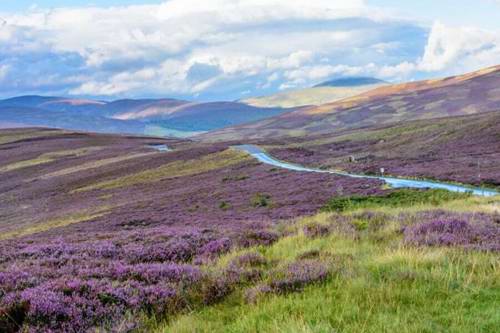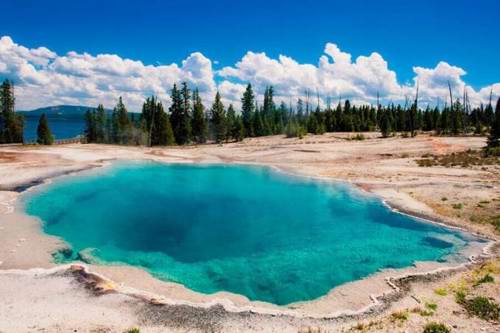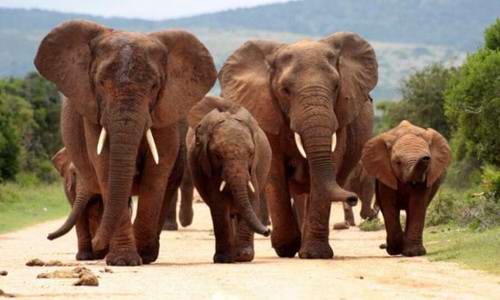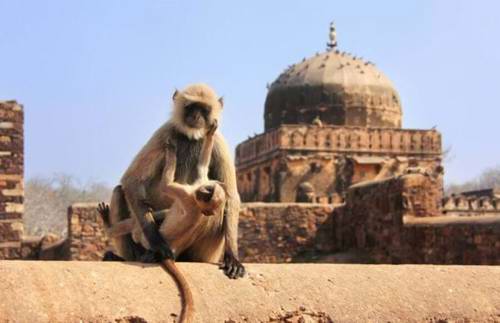
5 of the worlds best national parks
From Yellowstone to Ranthambore, we’re rounding up the most pristine natural environments
National parks are protected areas of land that are home to pristine natural environments and the wonderful creatures that inhabit them. The protected status of national parks allows some of the world’s most diverse flora and fauna to flourish in peace, largely unaffected by human interference. National parks appear in almost every country in the world (there are around 4,000 in total) and are one of the best ways to see the natural world at its very wildest.
We’ve selected our top five favourite national parks from around the world to help beef up your travel wish-lists. With so many to choose from, we had a tough job picking just five, so we’ve also considered variety – enjoy!
Cairngorms National Park, Scotland

Situated in the beating heart of the Scottish Highlands, the Cairngorms National Park is the UK’s largest national park, covering an area of 1,748 square miles, roughly twice the size of the Lake District National Park. Encompassing the Cairngorms mountain range, which is the UK’s largest mountainscape, the park is home to around a quarter of the UK’s threatened wildlife species, including the golden eagle, red squirrel and capercaillie, in addition to the iconic twinflower.
Separated by the mountain range, the park encompasses a range of different terrains and habitats, including pine and birch forests, subarctic tundras and several lochs. All in all, the Cairngorms National Park is home to around a third of Scotland’s native woodland and 52 summits higher than 2,953ft, the tallest of which is Cain Gorm, which stands at 4,084 feet above sea level.
Find out more: The Best of the Scottish Highlands
Yellowstone National Park, USA

Covering a vast area of 3,471 square miles, Yellowstone National Park is the largest of the USA’s 419 national parks, and also its oldest. The park was established in 1872 and is often, albeit mistakenly, thought to be the world’s oldest national park, although this particular accolade belongs to Mongolia’s Bogd Khan Uul National Park, which opened 99 years before Yellowstone. The majority of Yellowstone is within the state of Wyoming, although parts of it fall in neighbouring Idaho and Wyoming.
The decision to designate Yellowstone as a national park was taken to protect its unusual land formations and features, which were created as the result of moving tectonic plates. Geysers, hot springs and steam vents can be found within the park, which is made up of mountains, lakes and forests, roamed by wolves, bears, bison and elk. Highlights include the Yellowstone River, Mammoth Hot Spring and the Old Faithful geyser.
Torres del Paine National Park, Chile

Chile’s Torres del Paine National Park is one of South America’s most dramatic sights. The park encompasses an extraordinary variety of landscapes, from jagged mountain peaks and brilliant blue icebergs and glaciers to golden pampas grasslands and vast, sweeping desert plains. Designated as a national park in 1959, the Torres del Paine National Park is located within Chile’s Patagonia region, covering an area of around 700 square miles.
The west side of the park is covered by a huge Patagonian icefield, which slowly gives way to mountains and forest, then Andean desert and pampas grasslands in the east. The giant Andean condor can be found in the mountain peaks, whilst herds of guanacos – wild llamas – roam the foothills surrounding Grey Lake, beyond which the distant Grey Glacier hovers. The now-extinct giant sloth once thrived here, notably at the extraordinary Milodón Cave.
Kruger National Park, South Africa

South Africa, and indeed the entire African continent, is known for its game reserves and national parks, of which Kruger is one of the most famous. Spread out over a sweeping area of 7,523 square miles, Kruger National Park is Africa’s largest national game reserve and is almost the same size as the entire country of Slovenia.
The Big Five (elephants, rhinos, lions, leopards and buffalo) can all be found within the boundaries of Kruger National Park, along with diverse species of bird, including storks, African fish eagles and vultures. Other animals that can be spotted here include the caracal, cheetah, giraffe, wild dog and baboon. Kruger National Park has a hot, subtropical climate, making it a perfect year-round destination.
Find out more: Cape Town, the Garden Route & Big Five Safari
Ranthambore National Park, India

India is home to around half of the world’s tiger population, which are spread throughout the country’s 104 protected national parks, of which Ranthambore is the most well known. Located in Rajasthan, in northern India, Ranthambore was once the hunting ground of the Maharajas of Jaipur.
The park covers an area of 515 square miles and is known for its tiger population, which has increased by a third in the past decade, to at least 44. You’ll also find hyenas and Indian elephants – and if you’re lucky sloth bears and snow leopards – roaming throughout Ranthambore’s forests and jungles. The 10th-century Ranthambore Fort, now engulfed by tree roots and covered in moss, offers fantastic views of the park for those who make the arduous 200-step climb. The fort is also a great spot to view some of Ranthambore’s extraordinary birdlife, including vultures and serpent eagles.
Find out more: India's Golden Triangle & Shimla






